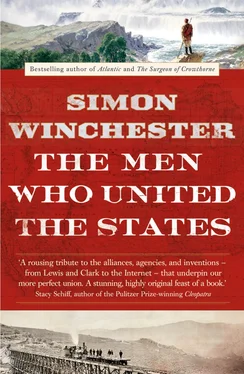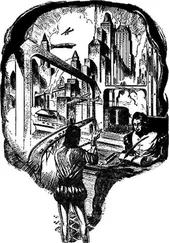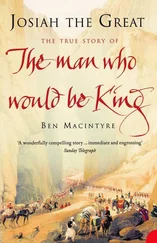In 1841 the eminent mineralogist James Dana—his Manual of Mineralogy was still a classic when I studied more than a century later, and its twenty-third edition was published in 2007—explored the Sierra Nevada and wrote extensively and temptingly of the mineral possibilities of the Far West. John Charles Frémont made a remarkable series of explorations of the West. One trip was made with the great frontiersman Kit Carson; on another he discovered Lake Tahoe and mapped Mount Saint Helens, then wrote what turned out to be the definitive map and guide for anyone thinking of traveling overland to Oregon or California; it remained in print for years. Howard Stansbury reconnoitered the near-empty territories between Salt Lake City and the Sierra Nevada in 1849; Marcy and McLellan wrote about finding coal and many other mineral treasures in the valley of the Red River in Louisiana and Arkansas in 1851; and Mr. W. P. Blake described “auriferous gravels” in California in 1853. The following year, seemingly to place a capstone on all these furious endeavors, Josiah Whitney—of Mount Whitney, the highest peak in the contiguous forty-eight states, and of Mount Shasta’s Whitney Glacier—wrote The Metallic Wealth of the United States , which for many years served as vade mecum for the legions who dreamed of traveling westward, striking it lucky, and making a fortune.
Such temptations! All that scenery, all that gold, free farmland, open space, political freedom, copper, coal, abundance. And all, or almost all, of it was reported by those geologists who had gone out exploring, with hammer and magnifying glass and compass and acid bottle. Their reports, which would prove to be catnip to a restless generation, played also into a swelling current of official opinion, which John Quincy Adams had expressed so succinctly in his famous letter to his father, the former president, in 1811:
The whole continent of North America appears to be destined by Divine Providence to be peopled by one nation , speaking one language, professing one general system of religious and political principles, and accustomed to one general tenor of social usages and customs. For the common happiness of them all, for their peace and prosperity, I believe it is indispensable that they should be associated in one federal Union.
Fourteen years after he wrote this most prescient and persuasive passage, Adams was himself elected president. And fifteen years after that, in 1840, an otherwise unknown Midwesterner named Joel P. Walker, together with his family and three missionary couples, decided that the drumbeat, the pressing need to move west was now, for him at least, too powerful to resist.
The allure of all that land, space, and possibility had been fully spelled out for Mr. and Mrs. Walker. The noble role his family might play in the creation of a national ideal had been made clear to him. The decision, bolstered by a logic that must have seemed all but inescapable, was now up to him.
So Mr. Walker bought tickets on a steamboat to one of the trailheads along the Missouri River. There he found himself a suitable wagon (for Jedediah Smith and others had reported that the South Pass was indeed suitable for the passage of wheeled vehicles); he yoked up a sturdy team of oxen; he piled up such possessions as he felt he needed for his new life; and in the late spring of 1840, he set out for the Green River staging post and rendezvous in what is now Wyoming and headed out to complete a two-thousand-mile journey into the West.
He traveled on the vague and rutted route that was already being called, by the fur trappers, traders, and missionaries who had already used it, the Oregon Trail. Joel Walker—whether he was real or a mere mythical symbol seems to matter little now—was the very first of a quarter of a million men, women, and children who would now follow him out west, as the great period of American migration and nation building got itself ponderously under way.
For the previous twenty years, geology had been paying out the lines, casting out the nets. Now at last it was reeling in the catch.
Starting in the 1840s, there were three principal westbound trails: one for those bound for California, a second that turned southward toward Santa Fe, and then the Oregon Trail, which was initially the busiest and, thanks to Francis Parkman’s celebrated book of the same name, the best-known. The Mormon Trail, which was established for altogether different reasons, geology barely among them, took off six years later.
Those setting out on each of these trails chose as their first jumping-off point the town of Independence, Missouri. The Mormons, however, decided on Omaha, farther north upstream along the Missouri River—and though the set of westbound trails went initially parallel for some hundreds of miles through the prairies, the folk who were looking for somewhere to plant their beleaguered religion (doing so eventually in Salt Lake City) traveled on the northern side of the Platte River valley, while the more mercantile were on the southern side. They would not meet until Wyoming.
This being America, bustling centers of commerce began to pop up at the trailheads. “A multitude of shops had sprung up to furnish the emigrants … with necessaries for their journey,” wrote Francis Parkman, “and there was incessant hammering and banging from a dozen blacksmiths’ sheds, where heavy wagons were being repaired, and the horses and oxen shod. The streets were thronged with men, horses and mules.”
Parkman didn’t care much for the migrants, or indeed for such Indians as he met along the way. He was an indefatigable snob, a New England swell with money, ambition, courage, and a Harvard education. His academic brilliance (he was a fine horticulturist) won him a professorship; his historical writings won him prizes, standing, a great monument, a school with his name on it, and his face on a postage stamp. But his account of the Oregon Trail is wanting, in all too many aspects.
Even the title is scarcely true: he completed only a third of the journey, and then only the easy bits. A Summertime Trip to Laramie would have been a more suitable title—not only geographically accurate (that is the farthest point he reached, scarcely a third of the way out from Omaha) but also underscoring the fact that his relatively simple eight-week journey, involving more mountain sighting than crossing, was for him a mere wheeze, “a summer jaunt,” as he put it. His disdainful take on the expedition left him scarcely able to grasp the true historical importance of what he was seeing. He claimed that the true motives of most of the emigrants were a source of great puzzlement to him; they had in common only that they were “some of the vilest outcasts of the country,” many of whom eventually “repent[ed] of the journey,” and were “happy enough to escape from it.”
The quality of Parkman’s prose disguises the dubious quality of the facts; his style, a poor stand-in for substance. In fact we do know rather well why the emigrants went. We do know how many—or more properly, how few—repented of their adventure and went back home: no more than 10 percent, the figure falling steadily as the trail became more familiar. Moreover, we know that almost none of these turn-arounds or go-backs, as they were called, were happy with their choice. More often they simply reset themselves, pulled themselves together, and tried again.
In the year of 1840 that saw the departure of the first true pioneers, Joel Walker and his family—and their successful arrival six months later in Oregon—a total of just thirteen people made the journey. The following year, it was twice that number; three years later, nearly three thousand went. Soon so many tens of thousands of pioneers were going, so long were the trains of wagons, that perplexed Indians in Wyoming said they might themselves head off to the East, believing it to be fast emptying of all white people. The ruts left by the little white-canvas-sided prairie schooners—or more rarely by the three-ton Conestoga wagons, with their iron-rimmed monster wheels, ten-oxen teams, and wickedly large turning circles—were ground so deep into the prairie earth that they can still be seen today.
Читать дальше












